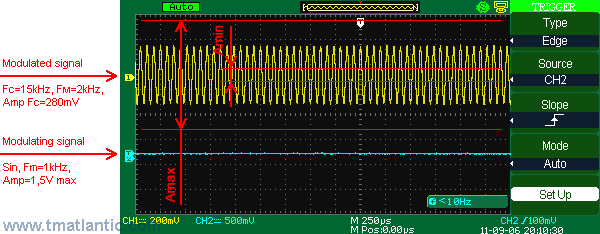| www.tmatlantic.com
Test & Soldering Equipment On-line Store |
|
D.E.V.I.C.E. (Wiki)Calculators Services |
|||||
Filter by first letter
|
Amplitude ModulationAmplitude Modulation is the simplest and popular changing way of data carrier parameters. Amplitude modulation means oscillation of harmonic amplitude under the variation law of transferred information signal. Amplitude modulation is used in RF technology for data transfer at broadcasting distance, acoustic location and other. For instance RF sound oscillations turn to low frequency power signal (modulating signal) changing (modulates) high frequency (carrier frequency) amplitude signal. The modulated radio signal amplitude changes in accordance with the sound signal force.
The main amplitude modulation (M) characteristic is amplitude modulation coefficient or modulation depth – amplitude max. and min. difference to their sum ratio expressed in percentages: M = (Amax - Amin)/(Amax + Amin) |
Site mapPrivacy policyTerms of Use & Store PoliciesHow to BuyShippingPayment




|


























